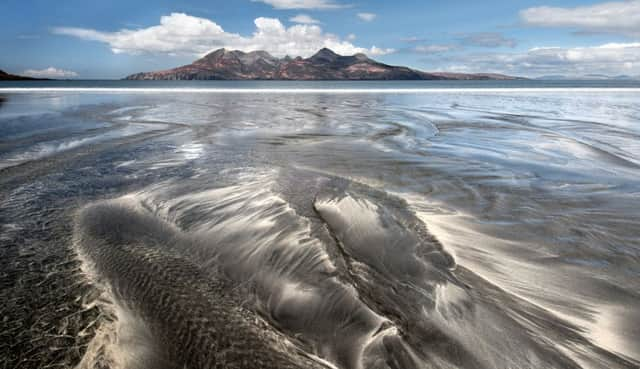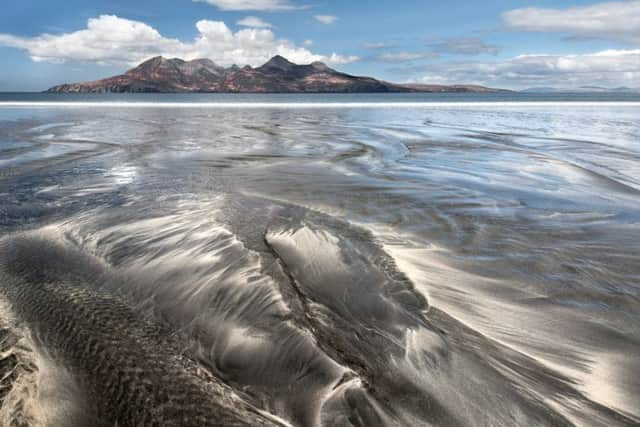6 of Scotland's bloodiest clan battles


While the clan system offered kinship, identity, food and livelihood it also created a ready supply of men willing to fight for their chief.
Here we look at six of the bloodiest battles of Scotland’s ancient past where clansmen were pitted against their rivals, the establishment - and even their own father - as they entered brutal survival mode.
Advertisement
Hide AdAdvertisement
Hide AdBattle of the Spoiling of the Dyke, 1578, Isle of Skye, Macleods and Macdonalds


The deep feud between the Macleods of Waternish and the Macdonalds of Uist came to a cruel head in a church on Skye in 1578.
The Macleods were assembled for a service at Trumpan when the Macdonalds, who had earlier landed in a fleet of eight ships at Ardmore Bay, surrounded the church and set it on fire.
All the worshippers were burned alive apart from one young woman, who reportedly managed to escape by a window. Macleods, alerted by the smoke and the fire, flocked to the church.
Advertisement
Hide AdAdvertisement
Hide Ad“Before the Macdonalds could regain their boats, which by the receding of the tide, were high and dry upon the rocks at Ardmore, they were attacked by the Macleods,” wrote Alexander Cameron in his 1892 text The History and Traditions of Skye.


“A desperate struggle ensued in which all the Macdonalds were slain. Their bodies were range in line alongside a turf dyke...and the dyke was tumbled over on the top of them - a quick but unfeeling form of burial.”
The Eigg Massacre, Isle of Eigg, 1577, Macleods and Macdonalds
The entire population of Eigg was wiped out the year before after the Macleods suffocated to death more than 350 Macdonalds in a cave after lighting a fire at its narrow mouth. It was another bleak slaughter amid the feud of these two clans,
Advertisement
Hide AdAdvertisement
Hide AdThe Eigg Massacre was triggered after three young Macleod men were banished from the island, bound by hand and foot and cast adrift in their boat, after insulting a number of young Eigg women, according to accounts.
After the boat washed up at Dunvegan, the enraged Macleod chief set sail for Eigg with a number of his men to avenge the ill treatment of his kin.
The Macdonalds, aware of the approaching Macleods, hid in a large cave, the Cave of Frances, in the south of the island for some time.
A watchman was spotted by the Macleods as their boat was preparing to depart following a fruitless search of the island. His footprints were traced back to the cave.
Advertisement
Hide AdAdvertisement
Hide AdThe Macdonalds refused to surrender in belief the narrow entrance would be enough to protect them from their enemy.
Macleod then lit a large fire of turf and ferns at the entrance of the cave with the smoke suffocating all those inside.
Battle of Glenfruin, Argyll, 1603, MacGregors and Colquhouns
Sir Alexander Colquhoun of Luss was granted permission by the Privy Council in 1602 for his clan to bear offensive arms and defend its territories.
Advertisement
Hide AdAdvertisement
Hide AdThe MacGregors, who had a reputation for looting and raiding, were the key target of this wealthy Argyll clan,
In February the following year, Sir Alexander, who ruled over swathes of fertile land near Loch Lomond, marched into Glen Fruin to meet their adversaries.
But around 400 MacGregors and their allies, led by Alastair of Glenstrae, were already waiting.
The Colquhouns were quickly trapped and outflanked by the waiting clansmen with the MacGregors showing no mercy to their neighbours.
Advertisement
Hide AdAdvertisement
Hide AdAround 140 Colquhouns were killed in cold blood, many after being taken prisoner. Eighty horses, 600 sheep and 600 cows were seized from land with houses and corn yards burned, according to accounts.
Around a year later, Alastair of Glenstrae and 11 leading clan figures were hung at the Mercat Cross in Edinburgh, with the leader hoisted above his men before being drawn and quartered.
King James V1 held a judicial review of the incident and banned the name MacGregor. The battle site and a memorial are a short drive up from Arden, north east of Helensburgh.
Battle of the Clans, Perth. 1396, Macphersons and Davidsons
Perhaps one of the most bizarre clan battles, this rout was staged in a gladiatorial style with Robert II taking the best seats for the spectacle outside Perth.
Advertisement
Hide AdAdvertisement
Hide AdSome have recorded the battle as a fight between Clan Chattan and Clan Kay but later versions have claimed it was held to settle internal warfare of Clan Chattan, a conglomerate of clans which included Macphersons, Davidsons, Keith and Macintoshes, among others.
The clans were at war over which group got to take the right flank, the position of the highest honour in clan warfare.
Robert II called a staged battle to settle the differences once and for all.
Thirty men from each clan were selected to represent their side and fight it out to the death.
Advertisement
Hide AdAdvertisement
Hide AdSwords, axes and maces were used in battle with the Davidson numbers quickly diminishing in the face of around 20 Macphersons.
The last Davidson jumped in the River Tay and the victory was claimed by the Macphersons
Battle of Harlaw, near Inverurie, 1411, Lord of the Isles and the Earl of Mar
The high count of noble blood shed at the Battle of Harlaw is a key aspect of this brutal rout fought outside Inverurie as Donald, Lord of the Isles, clashed with the Earl of Mar and his fellow supporters of the Duke of Albany.
Advertisement
Hide AdAdvertisement
Hide AdThe battle has been dubbed a crucial conflict between Highlanders and Lowlanders with some claiming it blocked the expansion of Gaelic, although this has been debated.
It was fought as Donald sought to secure the Earldom of Ross following some successful expansion into the mainland from his Hebridean power base.
The Earl of Mar had been planning to fight for the earldom for more than a year when Donald and his troops - said to represent the biggest Highland force ever mustered - marched through Moray and into Aberdeenshire “crushing and pillaging and turning everything to waste” as they advanced.
It has been suggested that 900 men of Donald’s forces were slain and many more injured whilst Mar’s lost 600, and again with heavy casualties.
Advertisement
Hide AdAdvertisement
Hide AdJohn Major, a 16th Century historian, wrote of Harlaw: “The whole plateau is red with blood; from the higher points to the lower blood flows in streams…”
The fatality list of the Earl of Mar’s included several high ranking figures of the day, including Provost of Aberdeen, Sir Robert Davidson; Sir James Scrymegour, and William de Abernethy, the heir of the Lord of Saltoun.
Some believe it to have been an indecisive battle with others have viewed the Battle of Harlaw as a strategic win for the Earl of Mar.
Battle of Bloody Bay, off Tobermory, Mull, sometime between 1480 and 1483. Macdonald and Macdonald
Advertisement
Hide AdAdvertisement
Hide AdDescribed as the greatest sea battle that Scotland - or even Western Europe - has ever seen, the Battle of Bloody Bay was fought off Mull as John Macdonald, Lord of the Isles, faced down a rebellion by his own son, Angus Og.
Angus sought to remove his father from the Lordship after he agreed to assist King Edward IV of England in his plan to invade mainland Scotland.
While some believe John Macdonald was preserving his own independent state from Edinburgh, Angus is said to have been so furious with his father that he dragged him out of his home at Duart Castle and made him sleep under an old rotten boat.
This fierce battle was fought just north of Tobermory with John Macdonald, head of Clan Donald, seizing support from Clan MacLean, Clan MacLeod, and Clan MacNeil.
Advertisement
Hide AdAdvertisement
Hide AdHis son’s support included that of Clan MacDonald of Clanranald and Clan MacDonald of Sleat.
The waters off Tobermory were reduced to a scene of carnage with Angus taking victory. Several of his prisoners were killed. Despite taking power, his clan’s military might was much reduced with half of its naval fleet lost.
Angus, last of the Lord of the Isles, was murdered 10 years later with the titles later transferred to the Crown. Some believe this battle signalled the beginning of the end of the clan system.